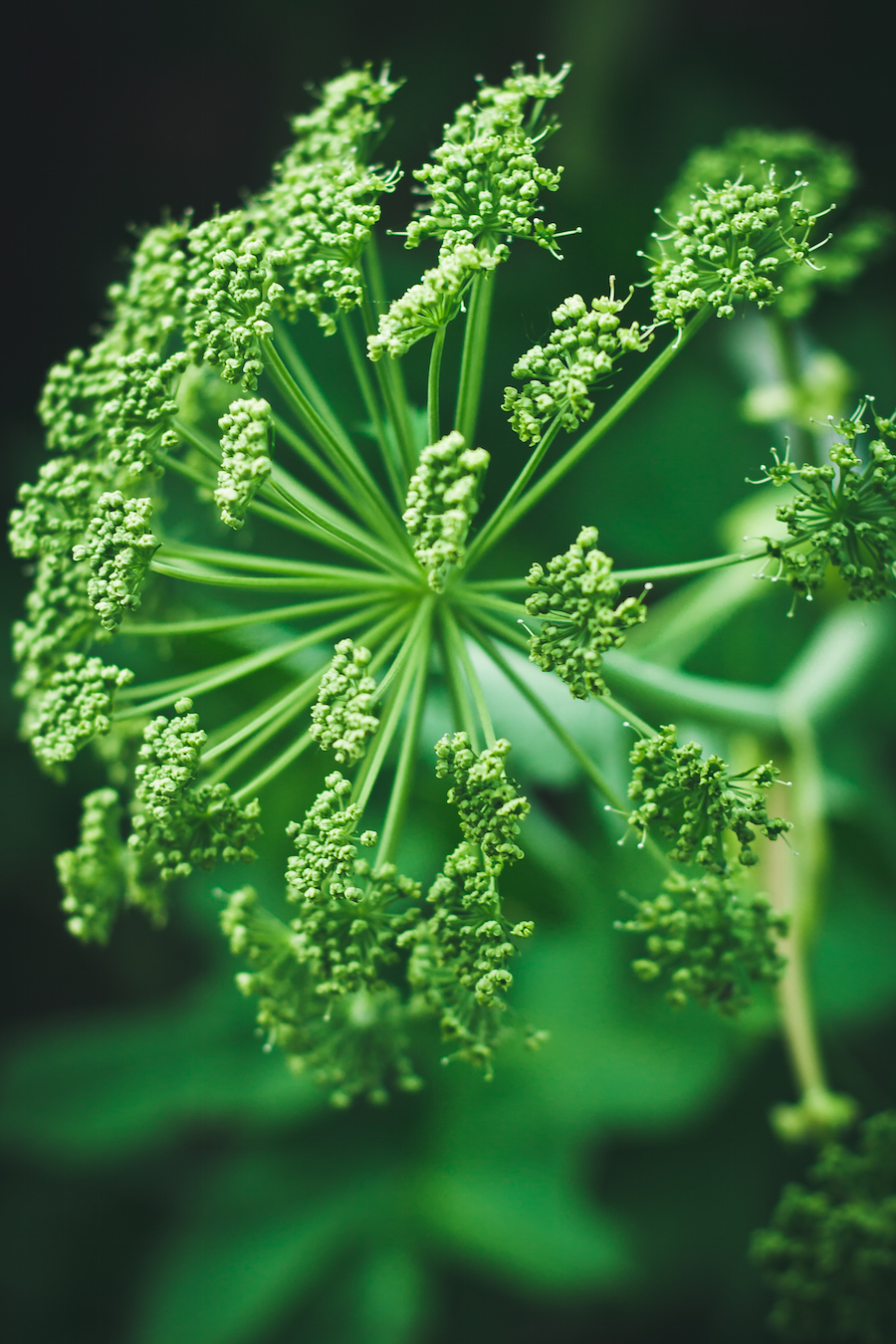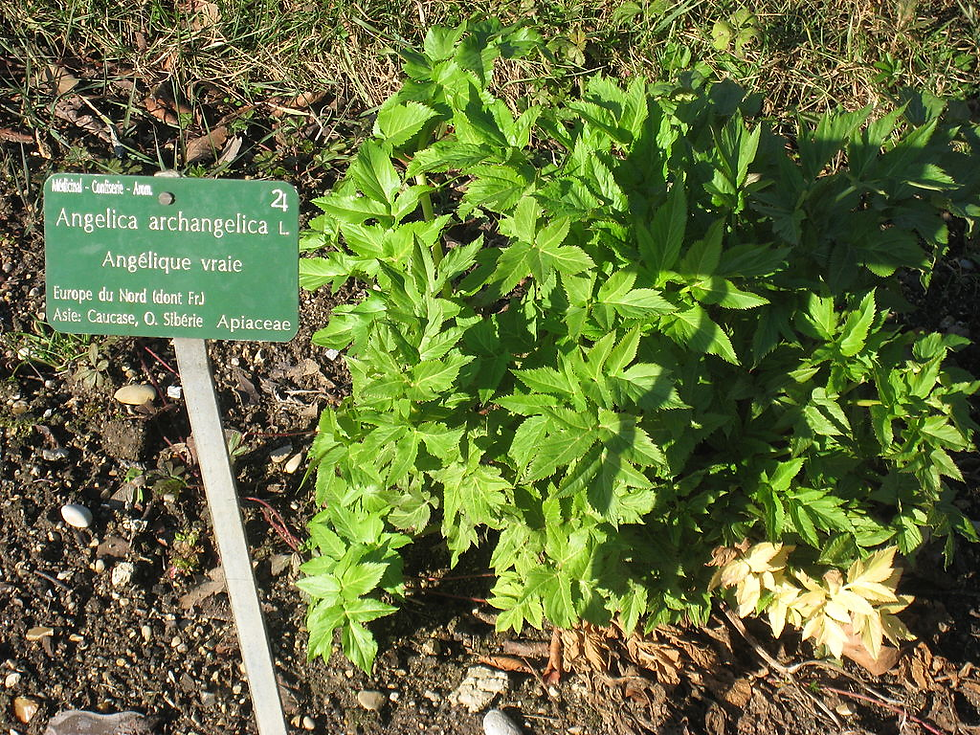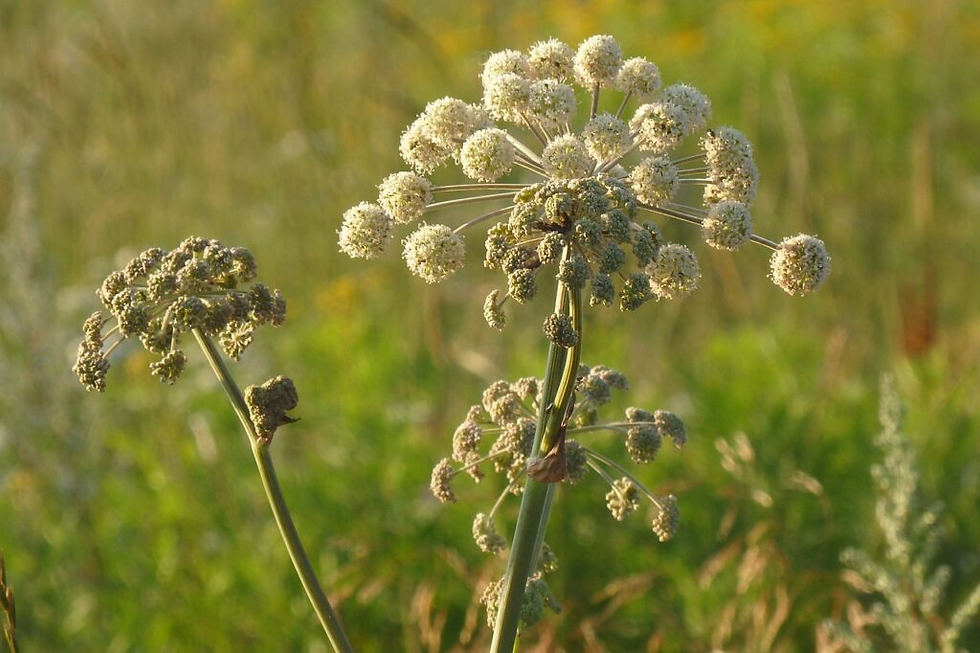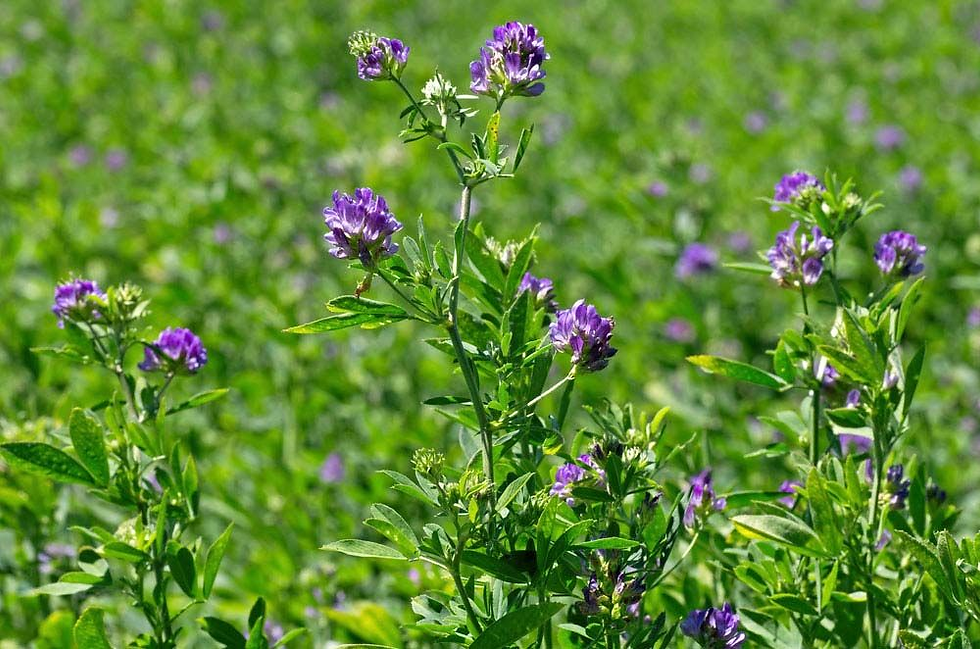Monograph: Angelica
- Andree Noye
- Aug 11
- 4 min read
The archangel of herbal medicine, bridging digestive, respiratory, and emotional realms.

Key Therapeutic Categories
Carminative
Aromatic bitter
Expectorant
Antispasmodic
Circulatory stimulant
Mild nervine
Emmenagogue (caution in pregnancy)
Diaphoretic
Primary Attributes
Actions: Aromatic bitter, warming carminative, expectorant, diaphoretic, mild antispasmodic, circulatory stimulant, nervine tonic.
Energetics: Warm, drying; disperses cold and damp; mobilises stagnation in peripheral and digestive circulation.
Taste: Aromatic, sweet, pungent, slightly bitter.
Methods: Root and rhizome (primary medicinal part) used as decoction, tincture, syrup, or powdered preparation. Seeds and leaves used in flavouring, teas, and topical applications.
Uses
Digestive atony with coldness and bloating
Slow, stagnant circulation in cold constitutions
Bronchial congestion with thick mucus
Menstrual cramps and delayed menses (non-pregnant only)
Cold-type arthritic stiffness
Nervous tension in cold, depleted states
Post-viral convalescence with poor appetite
Botanical & Cultural Context

Angelica archangelica is a biennial/perennial herb in the Apiaceae family, native to northern Europe and naturalised in temperate climates worldwide (Bhat et al., 2011). In Nova Scotia, it is not commonly found wild but can be cultivated successfully in well-drained, rich, moist soils in partial sun.
Historically, angelica was prized in medieval Europe as a protective herb during plague outbreaks, its name linked to Archangel Michael, who was said to have revealed its virtues to humans (Cook, 1869).
Sustainability / Ethical Harvesting
Wild populations of Angelica archangelica are not currently endangered, but related Asian species (A. sinensis, A. dahurica) face overharvesting pressures. United Plant Savers lists no at-risk status for A. archangelica, but recommends cultivation over wild collection to preserve habitat integrity. In Nova Scotia, cultivation in garden or greenhouse ensures steady supply without stressing ecosystems. Harvest roots in the autumn of the plant’s second year before flowering to maximise volatile oil and coumarin content.
Constituents & Pharmacology
Key constituents include:
Volatile oils (0.3–1%): α- and β-pinene, limonene, phellandrene, α- and β-bisabolene, and others (Bastyr University, 2003; Duke, n.d.)
Coumarins and furocoumarins: imperatorin, xanthotoxin, bergapten
Phenolic acids: ferulic acid
Polysaccharides: immunomodulatory effects documented in related species
Flavonoids: quercetin derivatives
Pharmacological actions include increased gastric secretions and motility (digestive stimulation), mild peripheral vasodilation (circulatory warming), bronchial relaxation and mucus expulsion (expectorant), and smooth muscle modulation in the gut and uterus (antispasmodic, emmenagogue) (Bhat et al., 2011; Mills & Bone, 2013).
Historical Uses
In European folk medicine, angelica was used as a “warming” remedy for cold-induced ailments, digestive sluggishness, and epidemic protection (Cook, 1869). Roots were candied and eaten for stamina; seeds distilled into cordials; leaves brewed as tea for colds and fevers.
Cultivation & Harvesting

Climate: Hardy in Nova Scotia with winter protection; thrives in Zones 4–7.
Soil: Deep, fertile loam with consistent moisture.
Propagation: Fresh seed sown in autumn; stratification improves germination.
Harvesting: Roots in autumn of second year; seeds in late summer when aromatic. Dry quickly in shade to preserve volatile oils.
Medicinal Uses / Clinical Studies
Digestive: Clinical and traditional use supports angelica root for dyspepsia, anorexia, and flatulence (Bastyr University, 2003; Bhat et al., 2011).
Respiratory: Expectorant effects documented in bronchitis with cold phlegm (Hoffmann, 2003).
Circulatory: Gentle peripheral stimulant, suitable for cold extremities and post-illness debility.
Women’s health: Emmenagogue effects noted; in TCM and Ayurveda, related species address menstrual irregularities.
Nervous system: Aromatic nervine, especially in depleted, cold constitutions.
Preparation & Dosage
Decoction: 1 tsp dried root per cup water, simmer 10 min; take 3x/day.
Tincture (1:5, 40–60% ethanol): 2–4 mL, 3x/day (Hoffmann, 2003).
Powder: 0.5–2 g, up to 3x/day.
Culinary: Leaves, stalks, and seeds in teas, cordials, and preserves.
Safety & Contraindications
Avoid in pregnancy due to emmenagogue potential.
Contraindicated in gastric/duodenal ulcers (increased acidity).
Avoid high doses in anticoagulant therapy (coumarin content).
Furocoumarins may cause photosensitivity; avoid excess sun after topical or high oral use.
Use cautiously in diabetics (possible hypoglycaemic effect).
Species Highlights
A. archangelica: Primary medicinal species in Europe/North America.
A. sinensis (“Dong quai”): Used in TCM for menstrual regulation.
A. dahurica: Traditional Chinese herb for headaches and skin conditions.
A. atropurpurea: Native North American species; similar actions but less aromatic.
References
Bastyr University. (2003). Materia medica. Department of Botanical Medicine.
Bhat, Z. A., Kumar, D., & Shah, M. Y. (2011). Angelica archangelica Linn. is an angel on earth for the treatment of diseases. International Journal of Nutrition, Pharmacology, Neurological Diseases, 1(1), 36–50. https://doi.org/10.4103/2231-0738.77531
Cook, W. (1869). The Physiomedical dispensatory. Cincinnati, OH: Wm. H. Cook.
Duke, J. (n.d.). A mini-course in medical botany.
Hoffmann, D. (2003). Medical herbalism: The science and practice of herbal medicine. Healing Arts Press.
Mills, S., & Bone, K. (2013). Principles and practice of phytotherapy (2nd ed.). Elsevier.



